PN532 NFC/RFID Module – 13.56 MHz Read/Write Capability
Introduction to NFC:
- Before understanding PN532 as a whole, let’s learn what is NFC technology and how does it work.
- Near Field Communication (NFC) is a technology standard based on Radio Frequency Identification (RFID), transmitting information wirelessly over short distances.
NFC technology makes life easier and more convenient for consumers around the world by making it simpler to make transactions, exchange digital content, and connect electronic devices with a touch. NFC is compatible with hundreds of millions of contactless cards and readers already deployed worldwide.
How NFC Works?
NFC operates on the principle of inductive coupling, at least for short-range implementations. This essentially involves the reader device generating a magnetic field by passing an electric current through a coil.
When a tag (with its own coil) is brought nearby, the field induces an electric current within the tag — sans any wires or even physical contact. Then, once the initial handshake is complete, any stored data on the tag is wirelessly transmitted to the reader.
Difference Between RFID & NFC:
- The key distinction between RFID and NFC lies in their transmission ranges.
- The RFID is often used over longer distances. For example, some regions automatically collect road tolls through RFID.
- Communication can take place over even longer distances if the RFID tag is equipped with a power source.
- NFC, however, only has a maximum range of a few centimeters, at most. And in most smartphone-related applications, you’ll find that the software will only initiate communication if there’s physical contact.
- NFC devices can act as either a reader or tag. This bidirectional capability allows you to use one piece of hardware, such as your smartphone for all kinds of different applications.
Features:
PN532
- 80C51 microcontroller core with 40 KB ROM and 1 KB RAM.
- Highly integrated demodulator and decoder.
- Integrated RF level detector.
- Supports ISO/IEC 14443A/MIFARE.
- Supports ISO/IEC 14443B (Reader/Writer mode only).
- Up to 50mm of operating distance in Reader/Writer mode for communication to ISO/IEC 14443A/MIFARE, ISO/IEC 14443B, or FeliCa cards.
- Up to 50mm of operating distance in NFCIP-1 depending on antenna size, tuning, and power supply.
- Approximately 100mm of operating distance in ISO/IEC 14443A/MIFARE or FeliCa card emulation mode.
- Possibility to communicate on the RF interface above 424 kbit/s using external analog components.
- Dedicated host interrupts.
- Low power modes
- Hard-Power-Down mode
- Soft-Power-Down mode
- Programmable timers
- Crystal oscillator
- 2.7 to 5.5 V power supply operating range.
- Support host interface:
- SPI interface
- I2C interface
- Serial UART
Mifare Card
- Mifare ISO14443A 1K Classic card, an RFID read/write card that is designed to work with a Read/ Write machine.
- Credit Card Size and thickness.
- 13.56MHz operating frequency
- 1K (1024) bytes of memory
- Mifare Classic.
- ISO14443A
- Easy printing of logo and custom graphic on both sides directly with a direct image or thermal transfer printers.
- Compatible with both RC522 and PN532
- Dimensions: 85 mm x 55 mm
Pin configuration:

Pinout Diagram Details:
| Pins | Details |
| VCC | VCC is to power up the whole device. |
| GND | GND pin helps to make the common ground with power supply and the Arduino/Microcontroller. |
| UART Communication Pins | |
| TXD | UART communication requires two communication pins one for transmitting data and second for receiving it. TXD helps to transmit the data. |
| RXD | The RXD pin is the data receiving pin of the UART communication. |
| I2C Communication Pins | |
| SDA | I2C communication requires one pin for data transmission and receiving. Therefore, in the PN532 module SDA is a data pin for I2C communication. |
| SCL | SCL is the clock pin of I2C communication. Data travel between devices according to the clock pulse. |
| IRQ | IRQ pin is an interrupt pin, which helps to I2C communication to generate the interrupt to get the attention of the Arduino/Microcontroller. |
| RST | RST is a reset pin, which helps to reset the device through an external signal. In PN532 this device is for I2C communication. |
| SPI Communication Pins | |
| MOSI | SPI communication requires 4-pins for data communication. Therefore, MOSI is a Master Out Slave In pin, it helps to transmit data from Arduino to PN532. |
| MISO | MISO is a Master In Slave Out, it helps to transmit data from PN532 to Arduino. |
| SS | SS is a slave select pin; it activates the SPI communication of the Slave (PN532). |
| SCK | It’s a clock pin, helps in Tran receiving of data according to the clock pulse. |
Datasheet:
How to use PN532 NFC Module?
PN532 NFC Module:
PN532 is an NFC controller by NXP that’s based on the 80C51 microcontroller, allowing for contactless communication at 13.56 MHz. Furthermore, the support for MIFARE Classic 1K/MIFARE Classic 4K card allows for higher transfer speeds up to 424 kbit/s in both directions.
It has 40 Kb ROM and 1Kb RAM. It is used to emulate ISO14443 cards. The ISO/IEC 14443 series of standards describes the parameters for identification cards or objects for international interchange.
Selection of the communication mode:
One of the big advantages of the PN532 NFC module is that it can use different protocols to communicate with Arduino such as UART, I2C or SPI. These different protocols use specific pins and libraries of the microcontroller.
To select the communication mode, the PN532 must be configured using the DIP switches (0-Low, 1-High):
NFC RFID Cards:
NFC tags work like any other RFID tag to communicate over radio waves. Two devices — the NFC tag and the NFC reader exchange information in NFC data exchange format. The NFC tag may be your ATM card, Travel Card, Metro Card or some other card.
An NFC tag sends radio waves to activate the antenna in a receiving device. The recipient validates the information to complete the information exchange. The technology works over a very short distance — approximately 4 inches. NFC tags work without a battery and draw power from another device, e.g., a smartphone.
For using PN532 module, first we will choose the mode of communication between MODULE and CONTROLLER. As mentioned earlier, this module has three interfaces, of which we have to choose one. Remember at any given point of time only one of three interfaces can be used. All three cannot be used together. We will have to choose the mode of interface using two switches solder to the board. The switches are S1 and S2 shown in pin diagram.
| S1 | S2 | Interface |
| OFF | OFF | HSU (High Speed UART) |
| ON | OFF | I2C |
| ON | ON | SPI |
- Choose the mode of interface and corresponding state of switches from above table. Next toggle the switches S1 and S2 to those positions.
- After choosing the type of interface, connect the module to the controller or processor.
- Say if you opted to use I2C, then connect module to I2C of the controller.
- If you opted to use SPI, then connect module to SPI of controller.
- After interfacing you have to download the library files for the module from corresponding websites.
- Say for ARDUINO platform [https://www.arduinolibraries.info/libraries/adafruit-pn532]. Save the library files in the IDE program files.
- Now all that left is to write the program for the controller or ARDUINO in the IDE software. And do call up on the saved library files while writing the program.
- With those libraries we can directly communicate with the module while skipping all the steps of communication protocol.
- Once the programming is done, power up the circuit to get the desired response.
Applications:
- Media or Data sharing.
- Robotics.
- Smart Phones and Smart devices.
- Security systems.
- Computer Peripherals.
- Theft protection systems.
- Mobile payments; Apple Pay NFC, Google Wallet.
- Password replacement.
- Product Authentication.
- Tap-to-Pair; Pairing Bluetooth devices just by tapping, instead of manual entering.
- Embedding digital experience in physical products; NFC’s small form factor allows for it to be embedded into physical products, enabling a unique experience when interacted.
Packing List:
- 1 x PN532 NFC RFID Module.
- 4 x Female to Female Jumper Wire.
- 1 x 13.56MHz Card.
- 1 x 13.56MHz Key tag.
- 12 x Bended Male Pins.









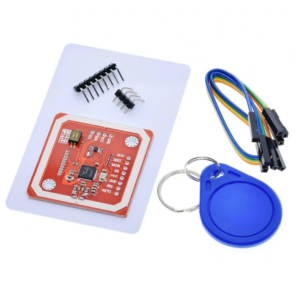

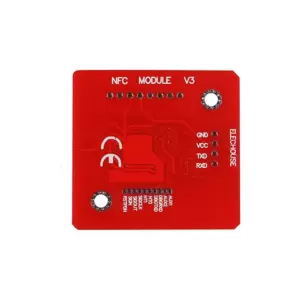

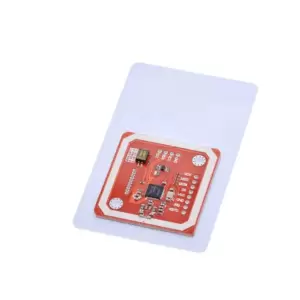
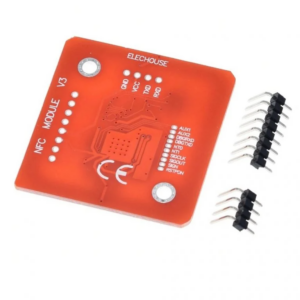










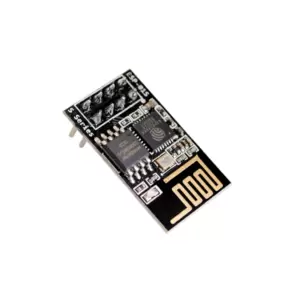


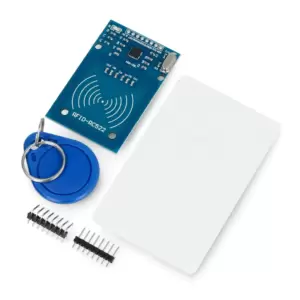
Reviews
There are no reviews yet.